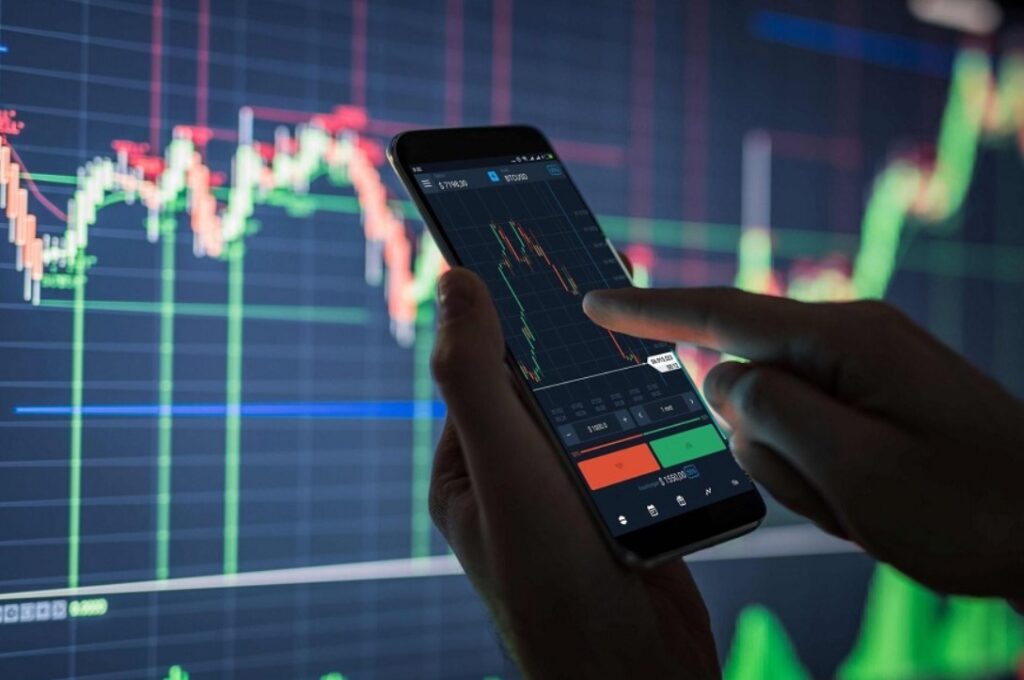Since the advent of cryptocurrency, people have put their resources in abundance with the goal of gaining profits when the price moves. Cryptocurrency CFD is yet another method of putting resources in digital currencies. If you are thinking about whether it’s safe – don’t worry; it’s as secure as the traditional methods. You don’t own the ‘real’ asset with crypto CFDs; instead, you trade on price changes, which means you can profit whether the price goes up or down. This article is a step-by-step guide to trading Bitcoin CFDs. Also, people worldwide trade in cryptocurrency regularly. Visit this site to start trading and enhance your earning possibilities.
What Are Crypto CFDs?
A CFD (contract for difference) is a financial derivative in which the trader and the brokerage enter into an agreement. The trader does not possess the digital currency in question when using crypto CFDs. Rather, he tries to profit from price fluctuations by forecasting whether the value of his selected cryptocurrency will rise or decline.
He will benefit if he correctly predicts the outcome. He must pay the associated loss if his prediction is incorrect. The profit or loss is calculated by multiplying the amount of change in the asset’s value by the quantity, with a little fraction going to the broker as a charge for his services.
Select a Broker

Source: toanthangship.com
You’ll need an account with a broker that allows you access to an online trading platform to make CFD crypto trades. Many brokers throughout the world offer CFD crypto trading, each with its own set of advantages and disadvantages, so you must choose the one that best suits your needs.
Look for brokers who provide negative balance protection, which ensures that you won’t lose any more money than you have in your account. You’ll also want to work with a broker who allows you to place stop-loss orders on your trades. These actions will enable you to limit your losses if the underlying asset’s price moves in the opposite direction of your prediction by closing the transaction at a predetermined level.
When it comes to CFD crypto trading, pricing can make a significant impact on your success, especially if you’re using a short-term plan. Fees and commissions can quickly cut into your profits, so seek brokers who have transparent and competitive pricing structures, including overnight swaps, transaction charges, and spreads. Consider some of the optional extra services that many brokers provide, such as demo accounts for risk-free CFD crypto trading, automated trading functionality, and instructional courses.
Choose Your Strategies

Source: nairametrics.com
Without a strategy in place, CFD crypto trading is a risky business where you may quickly lose a lot of money. Because crypto CFDs carry such a high level of risk, you must carefully examine your risk appetite and develop a risk management strategy that is consistent with your plan.
For CFD crypto trading, there are two main strategies:
Breakout Investing
This method entails defining a channel of resistance and support levels that the asset oscillates between regularly. A breakout trader would wait for the price to break through either level before opening a position in the hopes of the breakout becoming consolidated and a new trend.
Scalping
Scalping bitcoin is a trading method that entails making a large number of deals in a short amount of time, perhaps as little as a few minutes. Scalpers try to profit from minor price changes. When scalping bitcoin, you should always have a clear exit strategy in place, as a single trading loss might wipe out whatever tiny profits you’ve achieved. Scalping bitcoin is a low-risk trading approach when done correctly. It is due to the fact that distributing your capital across a large number of small deals spreads the risk.
Swing Trading
Swing trading is the practice of buying and selling bitcoin depending on market movements and holding that position until the trend slows or a trend reversal occurs.
Contrary Trading
This approach is similar to swing trading. However, this method involves betting against a consolidated trend in the hopes of seeing it reversed. It might be expressed in a variety of ways, such as a drop in trading volume.
Develop Your Skills

Source: en.cryptonomist.ch
Use the brokers’ sample accounts to learn how CFD crypto trading markets work and how leverage affects your trade. Leverage’s ability to multiply profits on good trades may urge you to keep pushing as high as you can, but you must be aware of the pitfalls.
Before opening a live account, you can use a demo account to test out a broker’s systems, trading platforms, and cost structures. You can also test or develop strategies without risking any real money by exploring other markets.
Guidance and Education

Source: forbes.com
Some brokers will provide you with trading guidance and training to help you become a better trader. Furthermore, there are a plethora of online courses, forums, blogs, videos, books, ebooks, and tutorials that can help you make better crypto price predictions.
Keep Your Strategy In Mind

Source: wallstreet.finance
The unpredictable markets that cause significant price fluctuations in both directions can rapidly convert CFD crypto trading into a vigorous activity. It’s crucial to keep your cool and think things through before making any potentially risky trade decisions. For additional information, research more and read on the industry or listen to podcasts.
Maintain a Diary

Source: forbes.com
Before, during, and after making your trades, jot down all information connected to your CFD crypto trading. It contains the entrance price and time, the goal closing price, the maximum losses you’re willing to accept, the exit price and time, the reason you made the trade, and what you learned from it. This data can help you notice patterns in the future and determine which techniques or decisions worked and which didn’t.
Conclusion
Crypto CFDs allow traders to profit from price swings in cryptocurrencies without having to possess them. Those who support crypto CFDs argue that the fact that you don’t have to own any cryptocurrency is a benefit, and it’s no surprise that CFD trading has sparked a lot of interest.



